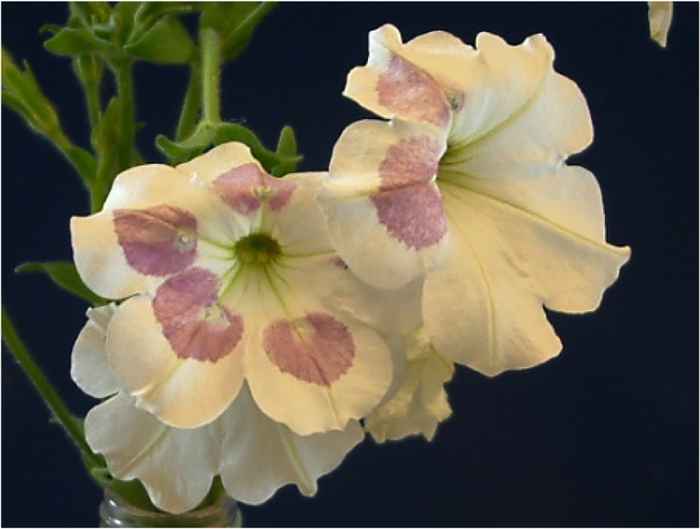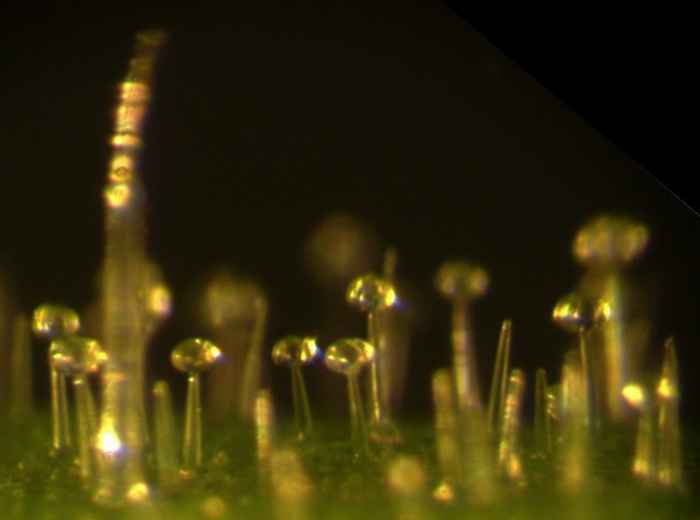Research Lines Plant Physiology
Prof. Michel Haring, Dr Silke Allmann, Dr Petra Bleeker and Prof. Rob Schuurink
Perception and signaling in plant-insect interactions
Volatile plant stress signals: The role of Green Leaf Volatiles as signaling and priming molecules
Almost all plants release green leaf volatiles (GLVs) in response to biotic and abiotic stress, and it is thus not surprising that these C6 volatiles can serve as signaling molecules for a wide variety of organisms. We have discovered that both plants and insects can influence the composition of GLVs released from plants by means of isomerases, that convert the GLV Z-3-hexenal to E-2-hexenal. We are interested in understanding why plants and insects possess such an enzyme and how GLV signaling is affected when such enzymes are knocked out in plants and insects. We are investigating how insects can perceive different isomers of GLVs and what this means for their behavior. Plants also perceive GLVs and can use this information to detect changes in their environment and to anticipate imminent stress. However, the molecular mechanism of GLV perception remains elusive. We have identified the first Arabidopsis mutants that are resistant to E-2-hexenal (her mutants) and have discovered a role for GABA in GLV-induced responses as well as in the defense against Pseudomonas. We are currently characterizing more her mutants. In addition we have discovered that several WRKY transcription factors are involved in the E-2-hexenal response in Arabidopsis. We continue to study the molecular mechanisms of GLV perception in plants taking various omics approaches.
Floral volatiles involved in pollination: The biosynthesis of volatile benzenoids in Petunia and the regulation thereof

Benzenoids dominate the fragrance of Petunia flowers. Through a targeted metabolomics and transcriptomics approach, we have discovered ODORANT1, the first transcription factor that regulates volatile benzenoid synthesis. We also provided insight in how Petunia flowers developmentally separate color and scent biosynthesis. We next identified interactors of ODO1 and the upstream and downstream players of which we are currently testing their role in volatile benzenoid production by making knockouts and knockdowns.
Manipulation of plant defenses by insects: Interaction of herbivore effectors with plant signaling.
When insects feed on plants they often introduce small compounds into the plant via the inflicted wounds. These “effectors” can affect plant defenses. We focus on how whiteflies, tobacco hornworms and thrips manipulate the defenses of plants either via proteinaceous effectors, small RNAs and/or metabolites. This research line was initiated with the discovery of the first effectors from spider mites that manipulate defense responses in plants. We have identified several plant proteins that interact with these insect effectors and investigate whether we can find variants of these plant proteins that would increase resistance to these insects.
Specialized metabolites in defense against pests: lessons from nature.
A first line of defense: The role of leaf hairs (trichomes) in tomato-insect interactions

In tomato many metabolites that are important in plant-pest interactions are produced in specialized hairs; glandular trichomes. We have identified and characterized terpene synthases from tomato that are specifically expressed in the glandular trichomes, are induced by jasmonic acid and involved in volatile terpene biosynthesis. We investigate how these glandular trichomes develop and how biosynthesis of specialized metabolites, such as volatile terpenes, is regulated. We have recently discovered that SlMYC1, a basic-helix-loop-helix transcription factor, plays a central role in both development and metabolism. More recently we discovered that plant small RNAs can also be crucial regulators of gene expression in trichomes. This research line provides new clues for natural plant defense mechanisms against pests.
Breeding resilient plants: The use of specialized metabolites in defense against pest
We focus on application of our findings for enhanced defenses against pests via the production of specialized compounds in tomato glandular hairs (trichomes). Wild tomato species have the ability to defend themselves by producing a wide variety of natural defense compounds that have a toxic, anti-feedant or repellent effect on insects. Most of these potent defense compounds have disappeared from our crops during domestication. We explore natural variation in wild tomato trichomes to identify metabolites, genes and regulatory elements needed to reconstruct natural and sustainable defense pathways in cultivated tomato. For this we work in close collaboration with the biotech and breeding industry, facilitating the translation of our work to the practice of tomato breeding.